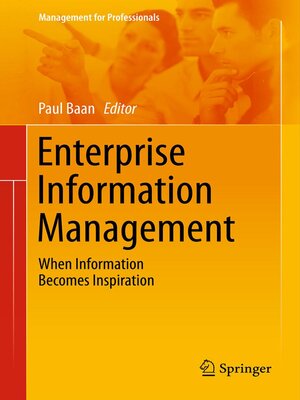Enterprise Information Management
ebook ∣ When Information Becomes Inspiration · Management for Professionals
By Paul Baan

Sign up to save your library
With an OverDrive account, you can save your favorite libraries for at-a-glance information about availability. Find out more about OverDrive accounts.
Find this title in Libby, the library reading app by OverDrive.



Search for a digital library with this title
Title found at these libraries:
| Loading... |
How an organization manages its information is arguably the most important skill in today's dynamic and hyper-competitive environment. In Enterprise Information Management, editor Paul Baan and a team of expert contributors present a holistic approach to EIM, with an emphasis on action-oriented decision making. The authors demonstrate that EIM must be promoted from the top down, in order to ensure that the entire organization is committed to establishing and supporting the systems and processes designed to capture, store, analyze, and disseminate information. They identify three key "pillars" of applications: (1) business intelligence (the information and knowledge management process itself); (2) enterprise content management (company-wide management of unstructured information, including document management, digital asset management, records management, and web content management); and (3) enterprise search (using electronic tools to retrieve information from databases, file systems, and legacy systems).
The authors explore EIM from economic and socio-psychological perspectives, considering the "ROI" (return on information) of IT and related technological investments, and the cultural and behavioral aspects through which people and machines interact. Illustrating concepts through case examples, the authors provide a variety of tools for managers to assess and improve the effectiveness of their EIM infrastructure, considering its implications for customer and client relations, process and system improvements, product and service innovations, and financial performance.






